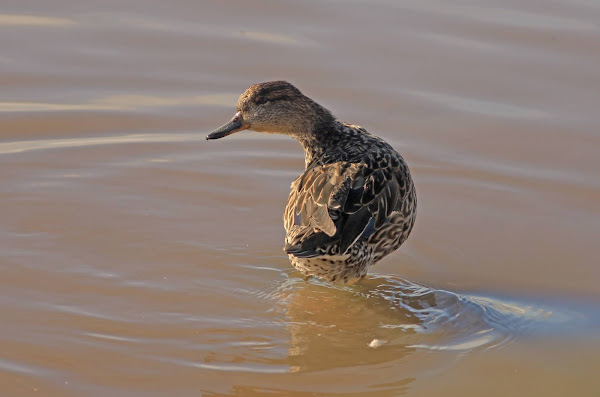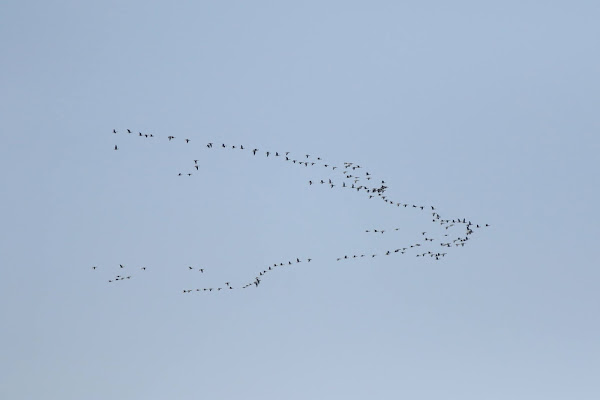Sunday, April 25, 2021
Common Scoter, April 2021
Busy times - too busy for blogging of late unfortunately (as reflected by overflowing memory cards), but in the spirit of an attempt at catching up, here's the first of hopefully a few posts this week, starting with this beautiful male Common Scoter on Scarborough Mere a few days ago. They've been wonderfully prevalent on my nocmig recording in recent weeks (many, many flocks), but its always good to remind yourself just how stunning they are in the flesh. More to follow, hopefully....
Monday, April 19, 2021
North York Moors Surveying - 17th April 2021
A few from today's surveying up on/off the Moors - highlights including a male Merlin (below), a singing Fieldfare (and other quiet ones), plenty of other thrushes (including Mistle Thrushes, above), countless Brown Hares, lots of Yellowhammers (also pictured) and plenty more on a glorious sunny day.
Monday, April 5, 2021
March 2021 (in random pictures)
Male Reed Bunting on Carr Naze. Reed Buntings are increasing as a breeding species locally and March is also a good month to catch them during visible migration.
Sunday, April 4, 2021
Stonechats & Sunsets
From recent days here in Filey. A tame, subtly very sharp female Stonechat on Carr Naze, where a pair have set up territory over the last few weeks; other pairs are in the area, following a pattern which occurs most years in March. Due no doubt to several factors (disturbance from humans and dogs being the primary) they breed only erratically, and often move on in early April - fingers crossed for this year....
.... and a Magpie going to roost over the setting sun on North Cliff, where I'd just set my nocmig recorder and bumped into no fewer than 12 Wheatears and a Short-eared Owl in the field alongside it. For a brief second, it could almost have been the Negev.....
Saturday, April 3, 2021
Killingholme Avocets, 29th March 2021
The last visit of a long, entertaining, sharply contrasting survey season on the Killingholme stretch of the Humber's south bank last week. It's been the second full 'winter' (early Oct to late March) of our studies there, and species diversity and abundance is different on each visit, reflecting the time of year (and the point of each species' migration seasons), the state of the tide, weather conditions and other factors; but there is always something to enjoy, without fail.
This visit was all about the Avocets, which put on beautifully balletic performances over the Humber, and settled in close to one of my vantage points - allowing lots of time to appreciate their unique feeding techniques on the virgin mud, as pictured. I also noticed a few colour-ringed birds, for which I await details. It was also great to see my first Sand Martins of the spring, battling impressively upriver on strong winds.
Friday, April 2, 2021
Nocmig Update, March 2021 - Flamborough
"Greouw!" A first Flamborough nocmig Bittern, 1935hrs, 22nd March (recording below)
After kicking off my Flamborough nocmig adventure back in August last year - see here and here - I started recording again in earnest (after a short midwinter break) in mid-February; and so this March was the first 'full' month of the year, and began the first spring of said activities on the Great White Cape.
Limited but consistent registrations in the first half of the month included regular Teal, Moorhens, Redwings and Song Thrushes on the move, with Curlew, Oystercatcher and Coot added in the second week, as well Skylark, Blackbird and Robin as the month wore on. Numbers were rarely high but both Curlew and Redwing clocked in with significant counts, echoing patterns for both species last autumn; on the 17th, for example, 82 of the former and several flocks of the latter passed over the garden.
As with the Filey results, species diversity increased as favourable conditions kicked in for several days from the beginning of the third week - Snipe, Grey Heron, Golden Plover and other early spring migrants were registered, before a busy night on the 21st, which included Knot, Dunlin, three Coots, and - halleluliah! - the first Common Scoters of the spring (migrating with Wigeon in the clip below).
With their overland nocturnal migration between the Irish and North Seas showing a steep spike in late March and April, Scoters are especially emblematic of early spring nocmig, and were the species that really kickstarted my beginner's adventures this time last year; I was hopeful, then, that my Flamborough recorder would see some action too, and that first beeping flock were bang on cue:
The bird of the month prize, however, indisputably went to the Eurasian Bittern, which croaked twice over the recorder shortly after civil dusk on the following night, the 22nd; a less-than-annual rarity on the Head. The same night saw plenty of supporting action, with 51 Redwings, Wigeon, Redshank, Robin and more all heading back to more northerly and easterly breeding grounds.
Teal - a regular migrant on March recordings
The next night (23rd) continued the theme, with two flocks of Wigeon, Golden Plover, two Coot, Moorhen, Curlews and more, but it was the 24th that stood out for sheer volume of Common Scoter movements - a total of twelve flocks between 2100hrs and 0020hrs were a real treat, some of which were clearly substantial.
Despite the stronger winds, Scoters continued to register, with another three flocks on 26th; almost as hardy as Redwings, which were pretty much a constant in small numbers every night.
Common Scoters happily lived up to their name in the second half of March
The last few days of March saw an upsurge in Golden Plover numbers (with e.g. 11 on 29th, including singing birds on that date and the following night), further trickles of Redwings, Moorhens and other 'stock' late Mar species, and fantastically, yet more Scoters powered resolutely on during the night of the 29th, with a further seven flocks registering on the recorder - bringing the total for the latter part of the month to no fewer than 25 flocks....
(For full daily counts, see Trektellen here)
Subscribe to:
Posts (Atom)




















































